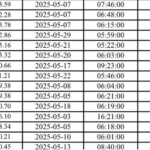Reducing costs for small businesses to join e-commerce
Le Hoang Oanh, Director of the Department of E-Commerce and Digital Economy, Ministry of Industry and Trade, shared that the strong boom of the digital economy in Vietnam has contributed 18.7% to the country’s GDP. Vietnam is a leading country in e-commerce growth, with an average growth rate of 16-30% per year. This has improved the efficiency of the modern distribution system, boosted domestic consumption, and created many new business models in the past time.
“Digital payment is one of the core factors promoting the growth of e-commerce in particular and the digital economy in general,” said Ms. Oanh.

Ms. Le Hoang Oanh, Director of the Department of E-Commerce and Digital Economy, Ministry of Industry and Trade
|
To develop the digital economy, Ms. Oanh said that digital payment and e-commerce go hand in hand. However, in reality, the rate of e-commerce consumers choosing the cash on delivery (COD) payment method is as high as 77.5%. This is because a part of the population still maintains the habit and psychology of using cash for payments.
In addition, there are challenges such as high-tech and electronic payment crimes; the situation of counterfeit and poor-quality goods. Also, information technology infrastructure is not synchronous, especially in rural areas. To promote e-commerce, in June, the Ministry of Industry and Trade issued the Master Plan for National E-Commerce Development for the period 2026 – 2030.
Notably, one of the plan’s goals is to achieve a target of 80% non-cash payment ratio in e-commerce by 2030.
Moreover, the Director of the Department of Commerce and Digital Economy proposed completing the legal framework and policy mechanisms, developing core technology infrastructure, and ensuring safety and security. Providing cashless payment solutions to support traditional market vendors; Enhancing connectivity and integrating cashless payment infrastructure. At the same time, there should be convenient payment solutions on mobile devices.
Especially for traditional markets, Ms. Oanh added that the industry and trade sector will focus on providing convenient solutions and reducing costs to help small businesses participate in e-commerce development and improve their business performance.
Proposing tax reduction to encourage the use of cashless payments

Mr. Kim Dae Hong, Deputy General Director of Shinhan Bank Vietnam
|
Sharing the experience of South Korea in promoting cashless payments, Mr. Kim Dae Hong, Deputy General Director of Shinhan Bank Vietnam, said that South Korea has implemented a financial transaction identification system since 1993.
About 20-30 years ago, South Korea built a foundation to encourage cashless payments. However, the cash payment ratio is still high, at about 15.9%, indicating that popularizing cashless payments remains a significant challenge.
An important factor contributing to the strong promotion of cashless payments is the tax deduction policy for credit card transactions. When using credit cards instead of cash for shopping, consumers can deduct a portion of their spending from their taxable income, thereby reducing their tax liability.
Not stopping there, since 2004, the tax deduction policy in South Korea has been further expanded. In addition to credit cards, other payment methods such as debit cards and electronic payments (mobile payments) are also included in the tax deduction amount. For cash transactions, consumers are encouraged to request red invoices or electronic invoices to ensure transparency and still be eligible for personal income tax deductions.
For shop owners and small businesses, small and medium-sized enterprises can access preferential capital from policy funds and enjoy tax incentives if they implement cashless payments. In addition, strict penalties are applied to acts such as refusing card payments, not issuing invoices, or deliberately hiding revenue. These violations may be subject to administrative or criminal penalties, thereby preventing fraud and promoting transparency in business operations.
In Vietnam, in recent times, the government has also made significant strides to promote this trend. Notable policies include: Requiring biometric authentication for fund transfer transactions; mandating the use of e-invoices for enterprises with revenue above 1 billion VND per year, as stipulated in Circular 32 and Decree 70. These are important foundations to promote the development of Vietnam’s digital payment ecosystem sustainably.
Building a culture of cashless payments cannot be done overnight, but it requires a clear roadmap in the medium and long term, along with consistent and synchronized implementation across policies, technology, and social awareness.
– 13:38 14/06/2025
“Shopee Imposes 3,000 VND Infrastructure Fee per Order, Sellers Worry About Profitability”
Shopee, a leading e-commerce platform, has recently announced that it will be implementing a new infrastructure fee of 3,000 VND per order for all transactions made from July 1st onwards. This strategic move by Shopee is sure to have a ripple effect on the industry, and we’re here to unpack it for you.
The New Tax Regulations for Returns and Cancellations
As of July 1st, the e-commerce platform will introduce a new tax policy. This involves deducting and remitting taxes on behalf of individuals and businesses selling products online through their platform. In instances of canceled transactions or returned goods, the platform is authorized to offset previously paid taxes with taxes arising from other transactions.











































